Transform your space with artificial stone – discover room-specific ideas, installation methods, and where to buy faux stone for a stunning and durable finish.
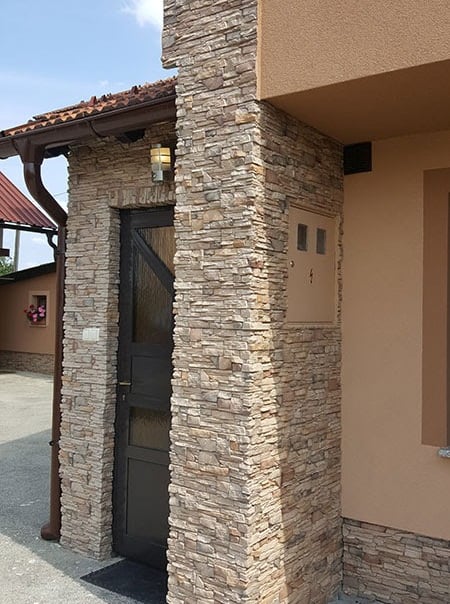
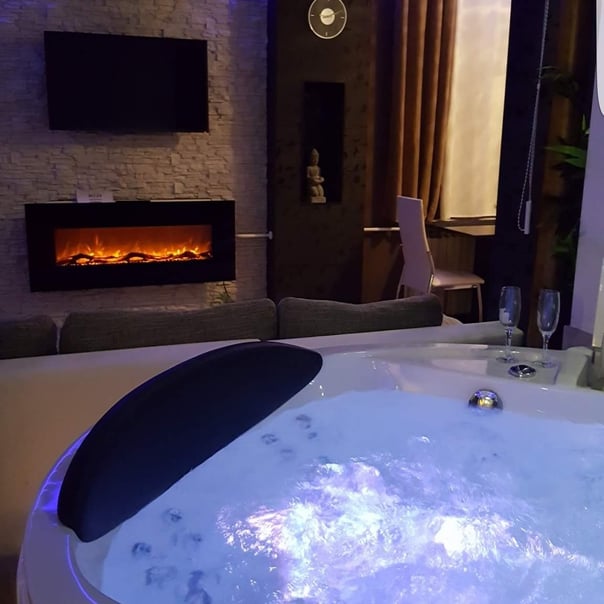
Home Decor with Artificial Stone: A Comprehensive Guide
Introduction to Artificial Stone
What is Artificial Stone?
Artificial stone, also known as faux stone, is a man-made product designed to replicate the look of natural stone. It’s made from concrete, aggregates, and pigments to achieve a variety of colors and textures.
Benefits of Using Artificial Stone
Artificial stone offers several advantages over natural stone. It’s lighter, easier to install, and often more affordable. Plus, it’s available in a wide range of styles, allowing for greater customization in your home decor.
Incorporating Artificial Stone in Home Decor
Artificial stone can be used in various ways to enhance the aesthetics of your home. Let’s explore some room-specific ideas.
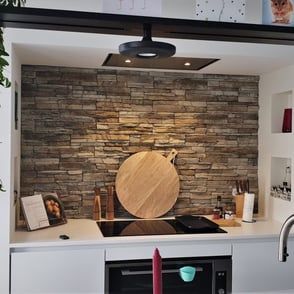

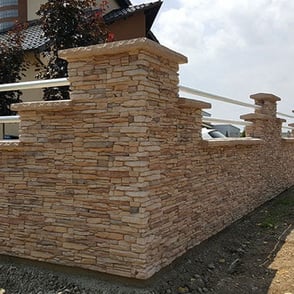
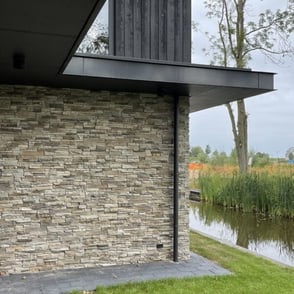
Living Room Ideas
Consider an artificial stone accent wall for a rustic touch. Or, use it to frame your fireplace for a cozy, inviting look.
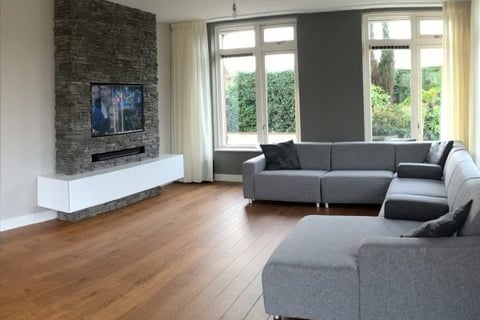
Kitchen Ideas
Artificial stone countertops are a popular choice. They’re durable, easy to clean, and can mimic the look of more expensive materials like marble or granite.
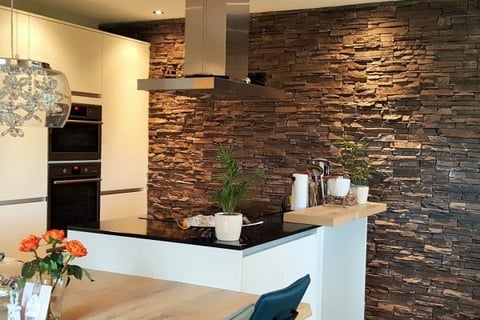
Bathrooms Ideas
Use artificial stone for your shower walls or vanity tops. It’s water-resistant and easy to maintain, making it ideal for wet ar
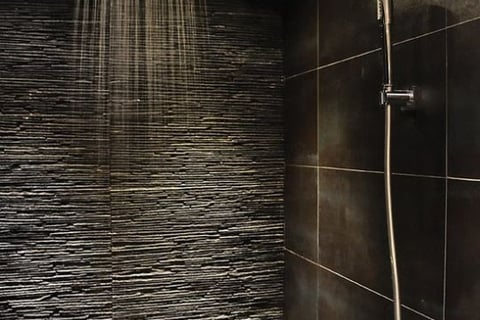
Hallway ideas
Renovating a hallway can be a challenging task due to its long and seemingly never-ending nature. However, there are clever ways to transform this space into a captivating and inviting area. By incorporating stylish decorative elements and well-chosen furniture, you can effortlessly counterbalance its length and make it more visually appealing. One particularly interesting idea is to experiment with different wall and ceiling accents, like a mesmerizing decorative stone wall, a strategically placed mirror, or an elegant pendant light fixture. These additions not only break the linear aspect of a hallway but also infuse it with character and charm. The essence of a faux stone wall is its ability to blend harmonious colors and exude an air of sophistication, all while creating a magnetic allure for anyone who encounters it. Prepare to be captivated by this wall, as it effortlessly embodies the essence of a vibrant and fulfilling life.
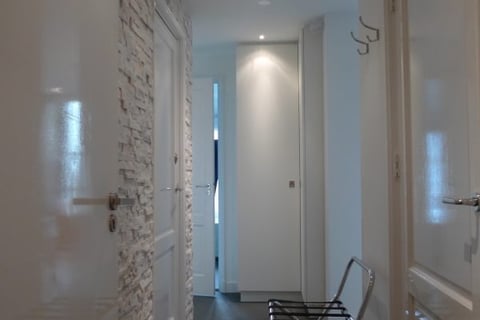
Staircase ideas
Adding decorative faux stone to the staircase can greatly enhance its visual appeal and create a captivating atmosphere. The staircase often serves as a focal point in a home, and incorporating faux stone can elevate its aesthetic.
The textured and realistic appearance of decorative faux stone adds depth and character to the staircase walls. It creates a sense of authenticity, as if the stairs were crafted from genuine stone. Whether you choose a rustic, weathered look or a sleek and modern design, faux stone can transform the staircase into a stunning architectural feature.
By incorporating decorative faux stone in the staircase, you can elevate the overall design of your home while adding a touch of elegance and sophistication to the space.
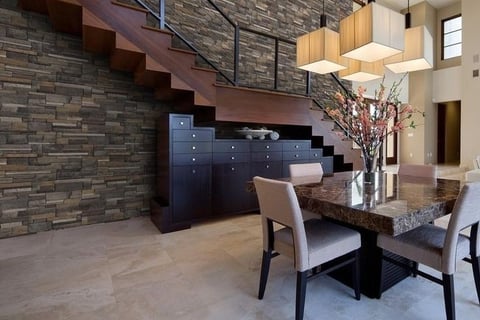
Decorative Faux Stone on the Exterior of a House
Using decorative faux stone on the exterior of a house can be a great way to enhance its curb appeal and add a touch of elegance to the overall design. Faux stone offers the look and texture of real stone while being more affordable and easier to install and maintain.
One of the key advantages of using faux stone on the exterior is its durability. Faux stone is typically made from high-quality materials that are resistant to harsh weather conditions, such as UV rays, moisture, and temperature fluctuations. This makes it a suitable choice for outdoor applications, as it can withstand the elements and maintain its appearance over time.
Decorative faux stone can be used in various ways on the exterior of a house. It can be applied to accentuate specific architectural features, such as columns, pillars, or wall sections, adding depth and visual interest. Faux stone can also be used as a decorative siding option, covering the entire exterior or specific areas to create a stunning and unique look.
Additionally, faux stone offers versatility in terms of design. It comes in a wide range of styles, colors, and textures, allowing homeowners to choose the option that best matches their desired aesthetic. Whether you prefer a rustic, natural stone look or a more contemporary and sleek design, there is a faux stone option available to suit your preferences.
In summary, using decorative faux stone on the exterior of a house can elevate its appearance, increase its value, and provide long-lasting beauty. It offers durability, affordability, and versatility, making it an attractive choice for homeowners seeking to enhance their home’s exterior aesthetics.
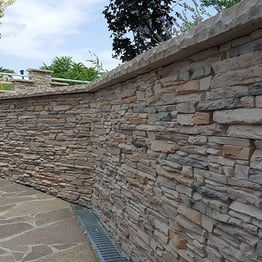
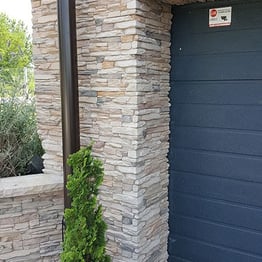
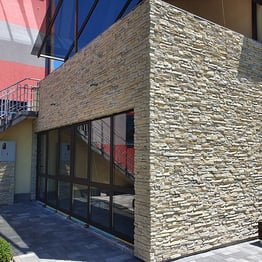
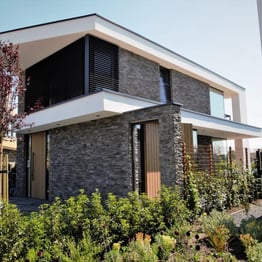
Decorative Faux Stone in the Pool
Adding decorative faux stone to your pool area can create a visually appealing and luxurious atmosphere. Faux stone offers the look and feel of real stone, but with added benefits such as affordability, ease of installation, and low maintenance.
Decorative faux stone can be used in various ways around the pool. One popular option is to use faux stone as a border or coping around the pool’s edge. This can create a seamless transition between the pool and the surrounding area, adding a touch of elegance and enhancing the overall aesthetic appeal.
Another way to incorporate faux stone is by using it to create accent walls or pillars near the pool. These features can serve as focal points, adding visual interest and creating a stylish backdrop for your pool area. Faux stone can also be used to cover outdoor structures like fireplaces, barbecues, or seating areas, tying the entire poolside design together.
One of the advantages of faux stone in a pool setting is its durability. Faux stone is designed to withstand exposure to water, sunlight, and other outdoor elements. It is resistant to fading, cracking, and warping, making it a suitable choice for areas with high moisture levels.
Additionally, faux stone is easy to clean and maintain. Unlike natural stone, it doesn’t require sealing or regular maintenance to preserve its appearance. Simply cleaning it with water and mild soap is usually sufficient to keep it looking beautiful.
When selecting decorative faux stone for your pool area, consider the style and color that will best complement your overall design theme. Whether you prefer a natural stone look or a more contemporary style, there are faux stone options available to suit your preferences.
In summary, incorporating decorative faux stone by the pool can enhance its aesthetic appeal and create a luxurious outdoor space. It offers durability, easy maintenance, and design versatility, allowing you to create a stunning poolside oasis for relaxation and enjoyment.
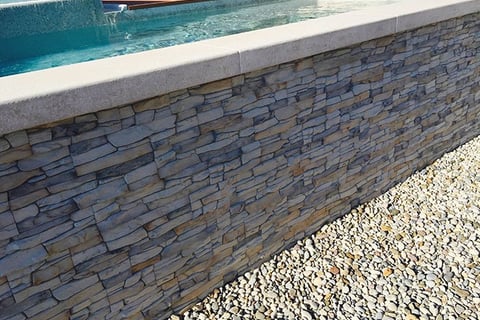
Decorative Faux Stone in the Garden
Using decorative faux stone in your garden can add a charming and natural touch to the outdoor space. Faux stone offers the appearance of real stone while being more affordable, lightweight, and easier to work with.
There are numerous ways to incorporate faux stone into your garden design. One popular option is to use it for creating decorative garden walls or borders. Faux stone walls can serve as attractive backdrops for flower beds or act as visual dividers to define different areas within the garden. They add texture and depth to the landscape, giving it a more sophisticated and inviting look.
Another way to utilize faux stone is by using it to construct raised garden beds or planters. Faux stone planters provide a rustic and natural aesthetic, blending well with the surrounding greenery. They can be used to grow flowers, herbs, or even small shrubs, adding visual interest and organization to the garden.
Faux stone can also be used to create pathways or stepping stones in the garden. This not only adds a decorative element but also provides functional and safe access throughout the garden. Faux stone pavers can mimic the appearance of natural stone while being more cost-effective and easier to install.
One of the advantages of faux stone in the garden is its resistance to weathering. Faux stone is designed to withstand outdoor conditions, such as sunlight, rain, and temperature fluctuations, without fading or deteriorating. This makes it a durable choice for long-term use in the garden.
Additionally, faux stone requires minimal maintenance. Unlike natural stone, it doesn’t need sealing or regular cleaning to preserve its appearance. Occasional rinsing with water is typically sufficient to keep it looking beautiful and free from dirt or debris.
When selecting decorative faux stone for your garden, consider the color and texture that will complement your existing landscape and personal style. Whether you prefer a rugged and weathered look or a more polished and modern design, faux stone offers a variety of options to suit your preferences.
In summary, incorporating decorative faux stone in your garden can elevate its aesthetic appeal and create a cohesive and inviting outdoor space. It offers durability, versatility, and easy maintenance, allowing you to enjoy a beautiful garden with the timeless charm of stone.
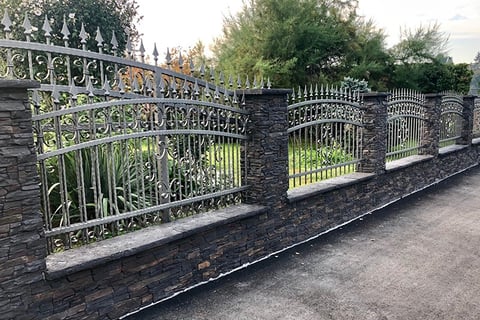
Characteristic of Faux Stone Walls
Faux stone walls are not only stylish but also incredibly functional, providing much-needed sound insulation to create a tranquil atmosphere within your home. However, the benefits don’t stop there – decorative faux stone is actually a remarkable heat insulator, helping to retain warmth and keep your living space cozy. To truly make a statement, consider using various types, colors, and sizes of faux stone when decorating multiple walls, infusing your home with vibrancy and personalizing each space. And to further elevate the beauty of your interior stone walls, don’t forget about lighting. Installing LED lights at the top of the wall will not only accentuate the natural materials but also add a touch of sophistication to your overall aesthetic.
components of faux stone
The general components of faux stone can vary depending on the specific type of faux stone being used. However, here are the commonly used components in the manufacturing of decorative faux stones:
- Aggregates: Aggregates form the base of faux stone and are responsible for its texture and realistic appearance. Aggregates can include materials such as sand, gravel, crushed stones, or other granular materials.
- Resins: Resins are used to bind the aggregates together and provide the necessary strength. Commonly used resins include epoxy resin, polyester resin, or polyurethane resin. These resins cure and become solid, ensuring cohesion of the aggregates.
- Pigments: Pigments are added to the resin to give the faux stone its color and natural appearance. Pigments can be blended to achieve different shades and hues, allowing for the simulation of various types of stones.
- Reinforcement agents: In some cases, reinforcement agents such as fiberglass may be added to the resin to enhance the strength and durability of the faux stone.
- Additives and admixtures: Additives and admixtures may be used to modify the properties of the resin, improve adhesion, flowability, or setting time.
It is important to note that the exact composition of faux stone can vary among manufacturers and depending on the specific type of faux stone being used. It is recommended to consult the product specifications or contact the manufacturer for accurate information regarding the components used in their faux stone.

Installation Method for Faux Stone
Installing faux stone can vary depending on the specific product and manufacturer’s instructions, but here is a general method for installing faux stone:
- Preparation: Prepare the surface where you will be installing the faux stone. Ensure that it is clean, dry, and free of any debris. Remove any loose paint, wallpaper, or other materials.
- Planning and Layout: Plan the layout of the faux stone installation. Determine where you want to start and end, and consider any corners or edges that may require special attention. Use a level and measuring tape to ensure accurate placement.
- Adhesive Application: Apply a recommended adhesive or mortar to the back of the faux stone panels or tiles using a notched trowel or a suitable adhesive applicator. Follow the manufacturer’s instructions regarding the type and amount of adhesive to use.
- Installation: Press the faux stone panels firmly onto the prepared surface, starting from the bottom and working your way up. Apply pressure to ensure good contact between the faux stone and the surface. Use spacers if necessary to maintain consistent spacing between panels.
- Cutting and Trimming: Use a wet saw, angle grinder, or appropriate cutting tool to trim or cut the faux stone panels as needed to fit around corners, edges, or other obstacles. Take safety precautions and follow the manufacturer’s guidelines for cutting the material.
- Grouting (if applicable): If the faux stone installation requires grouting, mix the grout according to the manufacturer’s instructions. Apply the grout between the faux stone panels, using a grout float or a suitable tool. Wipe away excess grout with a damp sponge before it dries.
- Cleaning and Finishing: Clean any excess adhesive or grout from the surface of the faux stone using a damp cloth or sponge. Allow the adhesive or grout to cure and dry according to the manufacturer’s instructions.
Please note that these steps provide a general guideline, and it is important to consult the specific installation instructions provided by the manufacturer of the faux stone product you are using. Following the manufacturer’s guidelines will help ensure a successful and proper installation.

Maintenance and Care for Artificial Stone
Cleaning Tips
Artificial stone is easy to clean. Simply wipe it down with a damp cloth and mild detergent. Avoid harsh chemicals that could damage the surface.
Longevity and Durability
With proper care, artificial stone can last for many years. It’s resistant to scratches, stains, and heat, making it a practical choice for busy homes.
Where to Buy Artificial Stone
Online Stores
The links contained in this product review may result in a small commission if you opt to purchase the product recommended at no additional cost to you. This goes towards supporting our research and editorial team. Please know we only recommend high-quality products.
Physical Stores
Many home improvement stores carry artificial stone. This allows you to see and feel the product before buying.
Conclusion
Artificial stone is a versatile and cost-effective option for home decor. It offers the beauty of natural stone without the high cost and maintenance. Whether you’re renovating your kitchen, bathroom, or living room, artificial stone can add a touch of elegance and sophistication.
FAQs
1. Is artificial stone as durable as natural stone?
Yes, artificial stone is designed to be durable and long-lasting, similar to natural stone.
2. Can I install artificial stone myself?
While it’s possible to DIY, it’s recommended to hire a professional for best results.
3. Does artificial stone require special cleaning products?
No, artificial stone can be cleaned with mild detergent and a soft cloth.
4. Can artificial stone be used outdoors?
Yes, it’s weather-resistant and can be used for outdoor projects like patios or garden walls.
5. Is artificial stone eco-friendly?
Yes, it’s made from sustainable materials and requires less energy to produce than natural stone.
